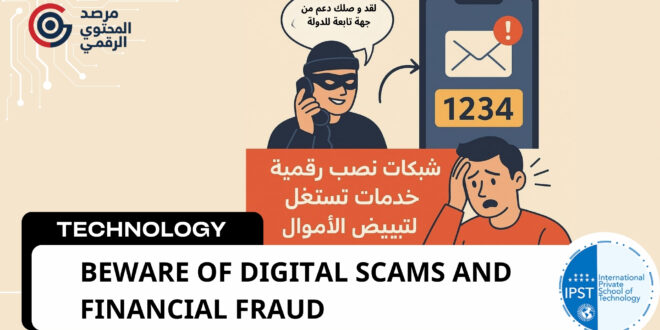With the advancement of technology, digital scams have become more sophisticated, exploiting financial transfer services for money laundering and fraud. Scammers use various techniques, such as text messages and phone calls, to trick victims into sharing verification codes, putting them at risk of financial theft.
How Does This Scam Work?
- Fake Message or Call: The victim receives a text message or phone call from someone pretending to be a representative of an official institution, such as a government agency or a bank.
- Request for Verification Code: The scammer asks the victim to share a verification code sent to their phone, claiming it is needed to confirm a financial transaction or complete an official process.
- Money Theft: Once the victim shares the code, the scammer gains access to their financial accounts or makes unauthorized transactions.
How to Protect Yourself?





 International Private School of Technology المدرسة الدولية الخاصة للتكنولوجيا Private School مدرسة خاصة للتكوين المهني
International Private School of Technology المدرسة الدولية الخاصة للتكنولوجيا Private School مدرسة خاصة للتكوين المهني


